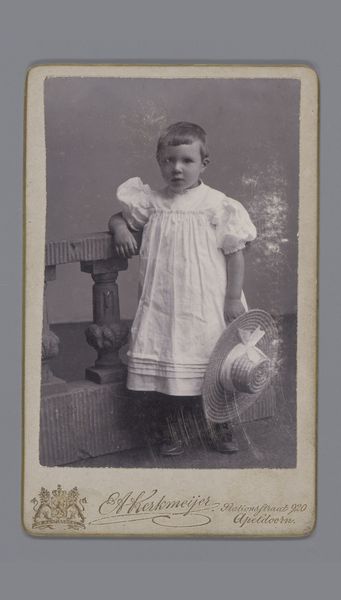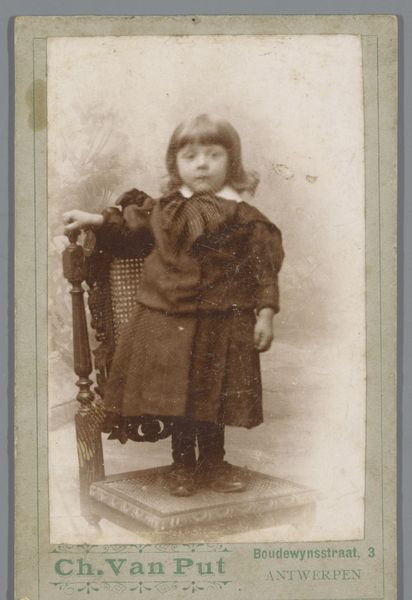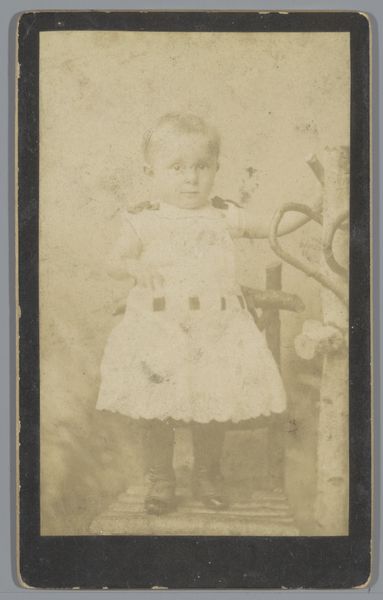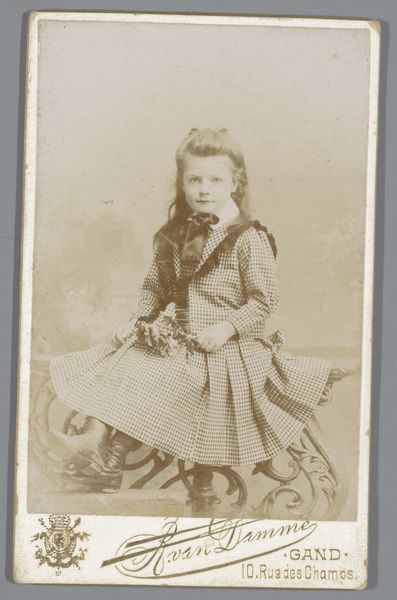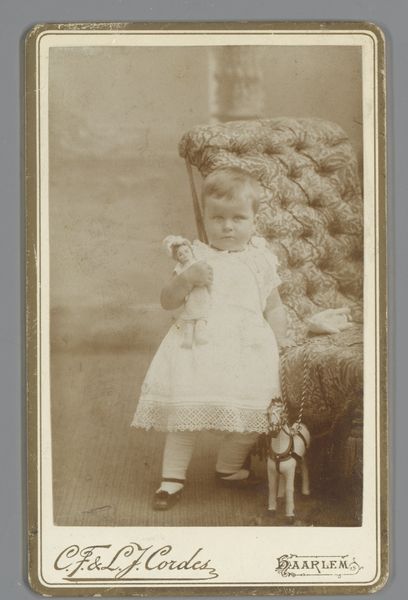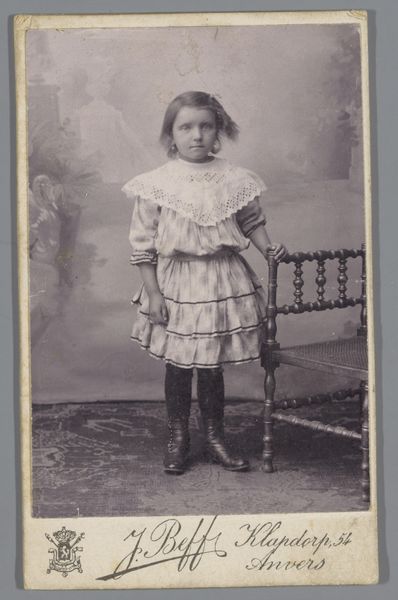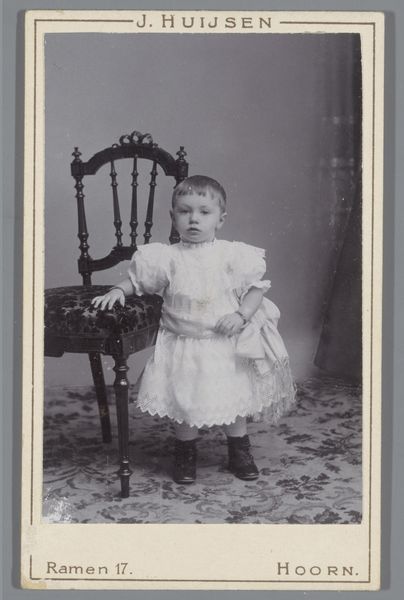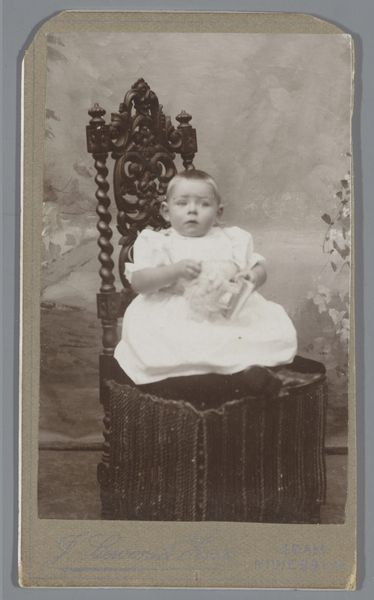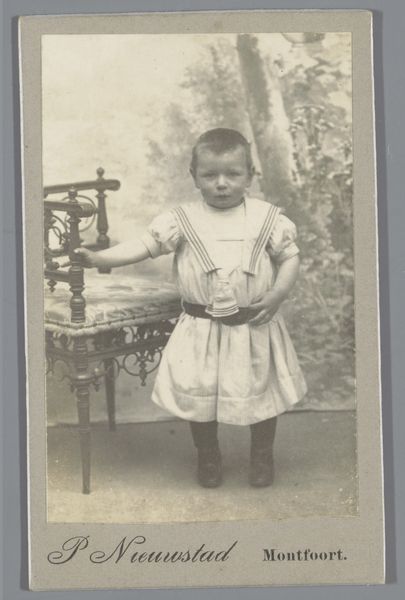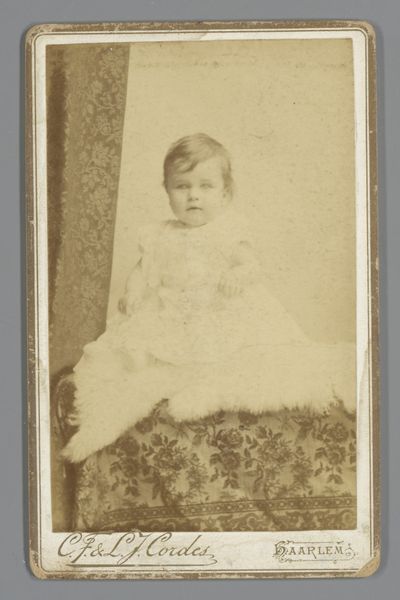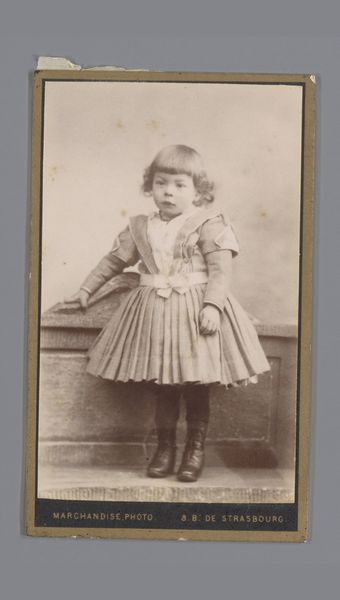
print, photography, gelatin-silver-print
#
portrait
# print
#
photography
#
coloured pencil
#
gelatin-silver-print
#
realism
Dimensions: height 106 mm, width 63 mm
Copyright: Rijks Museum: Open Domain
Editor: So this is Johannes Laurens Theodorus Huijsen’s "Portret van Iefje Hillegond Kramer," made sometime between 1883 and 1910. It's a gelatin-silver print with coloured pencil. I'm struck by the formality of it, but also the almost unnerving stare of the subject. What's your take on this portrait? Curator: The girl’s stare certainly holds power, doesn’t it? It prompts us to consider the historical context of childhood portraits. How often do we see children granted this level of direct, unsmiling representation? Was this an attempt to imbue her with a sense of agency, or perhaps a reflection of societal expectations placed upon young girls during that era? Editor: Agency? You mean like, she gets to choose how she looks? Curator: Partly. I mean, does the artist reinforce or subvert traditional gender roles through composition and pose? Consider the flowers. Are they symbols of innocence, or do they represent something else entirely, perhaps a life predetermined? Are we looking at the portrait of a passive subject or an active participant in her own representation? How does this intersect with class and the social function of portraiture at the time? Editor: It's definitely a lot to consider. I was mostly thinking about how serious she looks! Curator: Precisely. What does that seriousness communicate? Reflect on how photography at the time played into societal norms of portraiture, representation, and even constructed realities. And consider who this photographer was. Who was he photographing? Editor: So much to think about with just one photo! Thanks! Curator: Absolutely! Thinking about art from the perspective of the society of the time opens up fascinating avenues for exploring the relationship between identity, power, and representation.
Comments
No comments
Be the first to comment and join the conversation on the ultimate creative platform.
